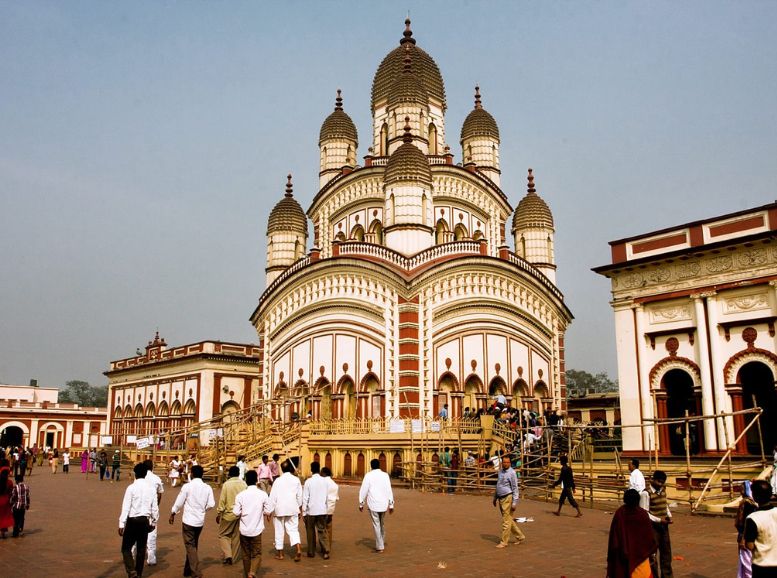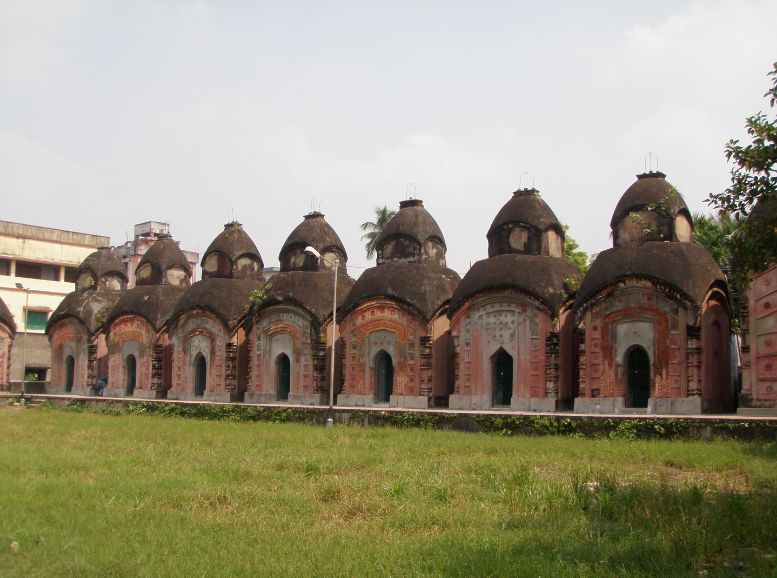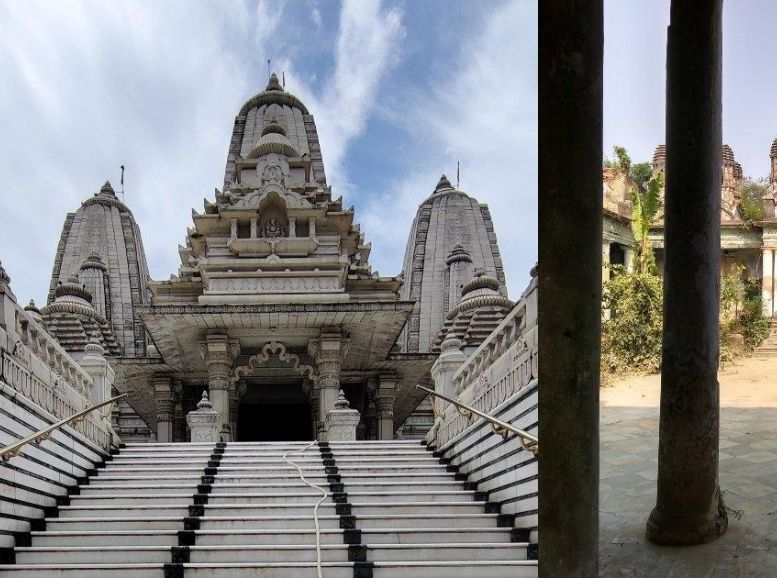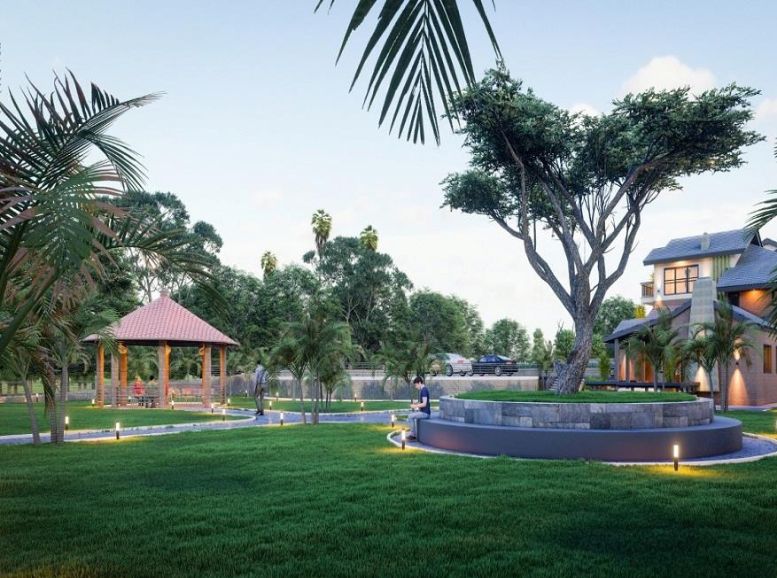n Kolkata, the heart of West Bengal, the Dakshineswar Kali Temple rises like a calming presence on the eastern bank of the Hooghly River. This iconic landmark isn’t just a place of worship for devotees of Kali, the fierce Hindu goddess. It’s a vibrant tapestry woven from India’s rich cultural and religious heritage. Built in the mid-19th century by Rani Rashmoni, a philanthropist known for her deep devotion, the temple has become a magnet for pilgrims and curious travelers alike.
How to reach:
By Air:
- The closest airport is Netaji Subhash Chandra Bose International Airport (CCU), roughly 15 kilometers away.
- Taxis and app-based cab services like Uber or Ola offer convenient rides directly to the temple. Expect a 30-45 minute journey depending on traffic.
By Train:
- Dakshineswar Railway Station is the most convenient option, located just 2 kilometers from the temple.
- A quick 10-minute rickshaw or taxi ride will get you there.
- Alternatively, you can arrive at Howrah Station, a major Kolkata hub 14 kilometers away.
- From Howrah, take a local train to Dakshineswar or hire a taxi/auto-rickshaw for a 45-minute ride.
By Metro:
- Kolkata’s Metro offers a fast and hassle-free option with the Dakshineswar Metro Station on the North-South Line.
- The station is a short walk from the temple complex.
By Road:
- Public buses operated by the Kolkata State Transport Corporation (CSTC) and private companies have routes with stops near the temple.
- Look for buses heading towards Dakshineswar or Dunlop Bridge.
Best time to visit:
- Winter Bliss (October to February): This is widely considered the prime time to visit Dakshineswar Kali Temple. The weather transforms into a cool and pleasant embrace, perfect for exploring the temple complex and its surrounding areas. Expect comfortable temperatures ranging between 10°C and 20°C (50°F to 68°F). Winter also coincides with vibrant festivals like Kali Puja (usually in October or November), celebrated with great enthusiasm at the temple. Witnessing these festivities offers a truly unique cultural immersion.
- Early Summer Escape (March to April): Early summer can also be a delightful time to visit before the heat intensifies. Temperatures typically range between 20°C and 30°C (68°F to 86°F). This period sees fewer crowds compared to peak winter, allowing for a more peaceful experience.
Attractions:
Main Kali Temple, Dakshineswar Kali Temple:

The main Kali Temple steals the show at Dakshineswar. Built in 1855 by a kind-hearted woman named Rani Rashmoni, this towering beauty showcases the amazing Bengali architecture of the time. You’ll see nine spires reaching for the sky, a style they call “Nava-ratna,” which simply means “nine jewels.”
Inside, the temple is dedicated to Kali, a powerful Hindu goddess. Here, she’s known as Bhavatarini, the one who can help you break free from life’s struggles. The highlight is the incredible statue of Kali herself. Dressed in beautiful clothes and sparkling gold jewelry, she’s surrounded by carvings that tell stories about Hindu gods and goddesses.
The temple courtyard has a special vibe. The air is filled with the sound of people chanting and the calming scent of burning incense. It’s a peaceful place where both visitors and worshippers come to pray and find inner peace. Every day there are special ceremonies and prayers you can watch to learn more about the temple’s traditions.
Twelve Shiva Temples:

This Kali Temple is the real showstopper at Dakshineswar! Built way back in 1855 by a super generous lady named Rani Rashmoni, this towering beauty is like a giant postcard from old-time Bengal. You can’t miss the nine pointy spires reaching for the sky, that’s their special “Nava-ratna” style, which just means “nine jewels” in regular talk.
Step inside and you’ll find the whole place dedicated to Kali, a powerful goddess in Hinduism. Here, they call her Bhavatarini, the one who helps you break free from all the tough stuff in life. The coolest sight is definitely the statue of Kali herself. Dressed to the nines in beautiful clothes and sparkling jewelry, she’s surrounded by carvings that whisper stories about the Hindu gods and goddesses.
Radha-Krishna Temple:

Nestled within the bustling Dakshineswar complex is a hidden gem – the Radha-Krishna Temple. Unlike the grand Kali Temple, this smaller temple offers a peaceful escape, dedicated to the love story of Radha and Krishna, two iconic figures in Hinduism.
The beautiful statues of Radha and Krishna, adorned with vibrant clothes, capture the essence of their devotion and love. While the architecture might be simpler compared to the main temple, the spiritual atmosphere inside is just as powerful. Devotees gather here to sing devotional songs (bhajans) and chant together (kirtans), filling the space with joyful reverence.
Panchavati Garden:

Tucked away in the Dakshineswar temple grounds is a peaceful surprise – the Panchavati Garden. Named after a forest in an epic Indian story (Ramayana) where the hero Rama hung out with his friends, this garden is your own little green escape. The coolest thing? Five ancient banyan trees stand tall here, like silent guardians who’ve witnessed history unfold. These giants watched over a holy man named Sri Ramakrishna who used to meditate under their shade way back in the 1800s.
The whole garden is a breath of fresh air – lush and quiet, a perfect escape from the bustling main temple. As you wander through the paths, you can almost feel Sri Ramakrishna’s peaceful presence. Benches are scattered around, inviting you to relax and reflect.
Local Experiences:
Riverfront Delights: Take a leisurely stroll along the Hooghly River ghats, soaking in the serene atmosphere. Enjoy a scenic boat ride for stunning views of the temple and its surroundings. Watch the local life unfold and capture breathtaking sunsets.
A Culinary Adventure: Savor authentic Bengali cuisine at local eateries and food stalls. Don’t miss delicacies like puchka (deep-fried pastries filled with potato and chickpeas), jhalmuri (spicy puffed rice), rosogolla (syrupy sweet), and traditional fish curry. For a more formal experience, visit nearby restaurants like Bhojohori Manna or 6 Ballygunge Place.
Souvenir Spree: Explore local markets and shops brimming with traditional Bengali handicrafts, saris (long pieces of unstitched cloth worn by women in India and Bangladesh), and religious souvenirs. Look out for unique items like terracotta jewelry, handcrafted idols, and vibrant textiles in Dakshineswar and nearby Belur.
Experience the Aarti: Participate in the daily rituals and aarti (offering of light) at the Dakshineswar Kali Temple. Witness the captivating display of devotion and spirituality, particularly enchanting during early mornings and evenings.
A Spiritual Journey: Explore other spiritual sites like the Adyapeath Temple and Belur Math. Each temple boasts its own unique architecture, history, and spiritual atmosphere.
Connect with the Faithful: Converse with local devotees and monks to gain insights into their spiritual practices and life stories. Learn about the local religious culture and the personal experiences of those deeply connected to the temple.
Immerse in Culture: Catch captivating local cultural performances, including traditional Bengali music and dance. Look out for events or festivals where these performances are often showcased.
Find Inner Peace: Seek tranquility in the peaceful Panchavati Garden within the temple complex. Reflect and meditate in the serene environment that once inspired Sri Ramakrishna.
Unveiling Spiritual Leaders: Visit museums and exhibits dedicated to Sri Ramakrishna and Swami Vivekananda at Belur Math. Gain a deeper understanding of their philosophies and teachings through interactive displays and artifacts.
Celebrate with the Locals: Immerse yourself in the vibrant local festivals like Kali Puja and Durga Puja. These grand celebrations offer a unique cultural experience with elaborate decorations, processions, and community gatherings.
Explore Street Food Delights: Embark on a street food tour in nearby areas like Shobhabazar and Shyambazar. Sample local favorites like kathi rolls (skewers of meat or vegetables wrapped in paratha flatbread), fish fry, and sweets from various street vendors.
Travel tips:
Stay Comfortable and Prepared:
- Hydration: Carry a water bottle, especially during hot weather.
- Sun Protection: Bring sunscreen, a hat, and sunglasses if needed.
Respect the Culture:
- Photography: Always ask permission before taking photos, especially inside the temple.
- Behavior: Maintain silence and respectful conduct within the temple premises.
Stay Safe:
- Valuables: Keep your belongings secure and be mindful of pickpockets in crowded areas.
- Travel Insurance: Consider purchasing travel insurance for unforeseen circumstances.
Enhance Your Experience:
- Local Guides: Hiring a guide can provide valuable insights into the temple’s history and significance. Bengali is the local language, but many guides and locals also speak Hindi and English.
Explore Further:
- Nearby Attractions: Allocate extra time to visit Belur Math, Adyapeath Temple, and Vivekananda Setu.
- Ferry Ride: Consider a ferry ride on the Hooghly River for a unique perspective.
Participate (Optional):
- Aarti: Witness the morning and evening aarti ceremonies, deeply spiritual experiences.
- Rituals: Participate respectfully in any rituals you wish to.
Foodie Delights:
- Local Cuisine: Try Bengali cuisine at nearby eateries, ensuring hygiene standards.
- Street Food: Explore street food options cautiously, prioritizing hygiene.
Festivals:
- Crowd Management: Be aware of large crowds during festivals like Kali Puja and Durga Puja. Plan accordingly.
- Cultural Immersion: Consider visiting during festivals for a vibrant and enriching experience.
Be Prepared:
- Vaccinations: Ensure you’re up-to-date with necessary vaccinations.
- First Aid: Carry a basic first-aid kit for minor issues.
Conclusion
A visit to Dakshineswar Kali Temple transcends a typical pilgrimage, transforming into an immersive journey into West Bengal’s soul. The temple’s stunning architecture and profound significance resonate deeply with all visitors. The complex itself offers a rich tapestry of experiences beyond the main attraction, with the serene Panchavati Garden, twelve Shiva temples, and bustling local markets. To ensure a smooth and respectful visit, explore our travel guide on Xplro.com. For an even richer experience, delve into the local life by savoring Bengali cuisine, witnessing (and perhaps even participating in) temple rituals, or exploring the scenic Hooghly River. Whether seeking spiritual solace, cultural enrichment, or simply a peaceful retreat, the Dakshineswar Kali Temple and its surroundings offer a unique and fulfilling journey. As you depart, you’ll carry with you not just memories of a majestic shrine, but a deeper understanding of the region’s rich heritage and vibrant spirit.
FAQs
- What is the significance of Dakshineswar Kali Temple?
- The Dakshineswar Kali Temple is a renowned Hindu temple dedicated to Goddess Kali, known for its spiritual importance. It is revered as the place where Sri Ramakrishna Paramahamsa, a prominent saint, attained spiritual enlightenment.
- When was Dakshineswar Kali Temple built?
- Construction of the Dakshineswar Kali Temple began in 1847 under the patronage of Rani Rashmoni, and the main temple was completed in 1855.
- What are the temple timings?
- The Dakshineswar Kali Temple typically opens in the early morning and remains open until late evening. It’s recommended to check the current schedule for accurate timings before planning your visit.
- Is there an entry fee to visit the temple?
- No, there is no entry fee required to visit Dakshineswar Kali Temple. It is open to all visitors free of charge.
- Are there any dress code requirements for visiting the temple?
- While there is no strict dress code, visitors are encouraged to dress modestly as a sign of respect for the religious sanctity of the Kali Temple from Kolkata.
- Can photography be done inside the temple premises?
- Photography may be restricted in certain areas of the Dakshineswar Kali Temple from Kolkata, especially during rituals and prayers. It’s advisable to seek permission before taking photographs.
- Are there any specific rituals or ceremonies that visitors can participate in?
- Visitors have the opportunity to participate in the daily aarti (prayer ceremony) and witness various rituals conducted at the Dakshineswar Kali Temple from Kolkata. Participation is optional but can enhance the spiritual experience.
- What nearby attractions are worth visiting along with the Dakshineswar Kali Temple?
- Nearby attractions include Belur Math, Adyapeath Temple, and Vivekananda Setu, offering unique cultural and spiritual experiences that complement a visit to the temple.
- What is the ideal time to visit Dakshineswar Kali Temple?
- The ideal time to visit Dakshineswar Kali Temple is during the cooler months, typically from October to February, to avoid the heat and humidity of the summer season.
- How can I reach Dakshineswar Kali Temple from Kolkata city center?
- The Dakshineswar Kali Temple from Kolkata is easily accessible from Kolkata city center via taxis, auto-rickshaws, metro, and buses, providing convenient transportation options.
- Is accommodation available near the temple for tourists?
- Yes, there are several hotels, guesthouses, and lodges available near Dakshineswar Kali Temple to accommodate tourists with various budgets and preferences.
- Are there any special festivals celebrated at Dakshineswar Kali Temple?
- Yes, festivals like Kali Puja, Durga Puja, and Sri Ramakrishna’s birthday are celebrated with fervor at the temple, attracting devotees and tourists alike to partake in the festivities.





